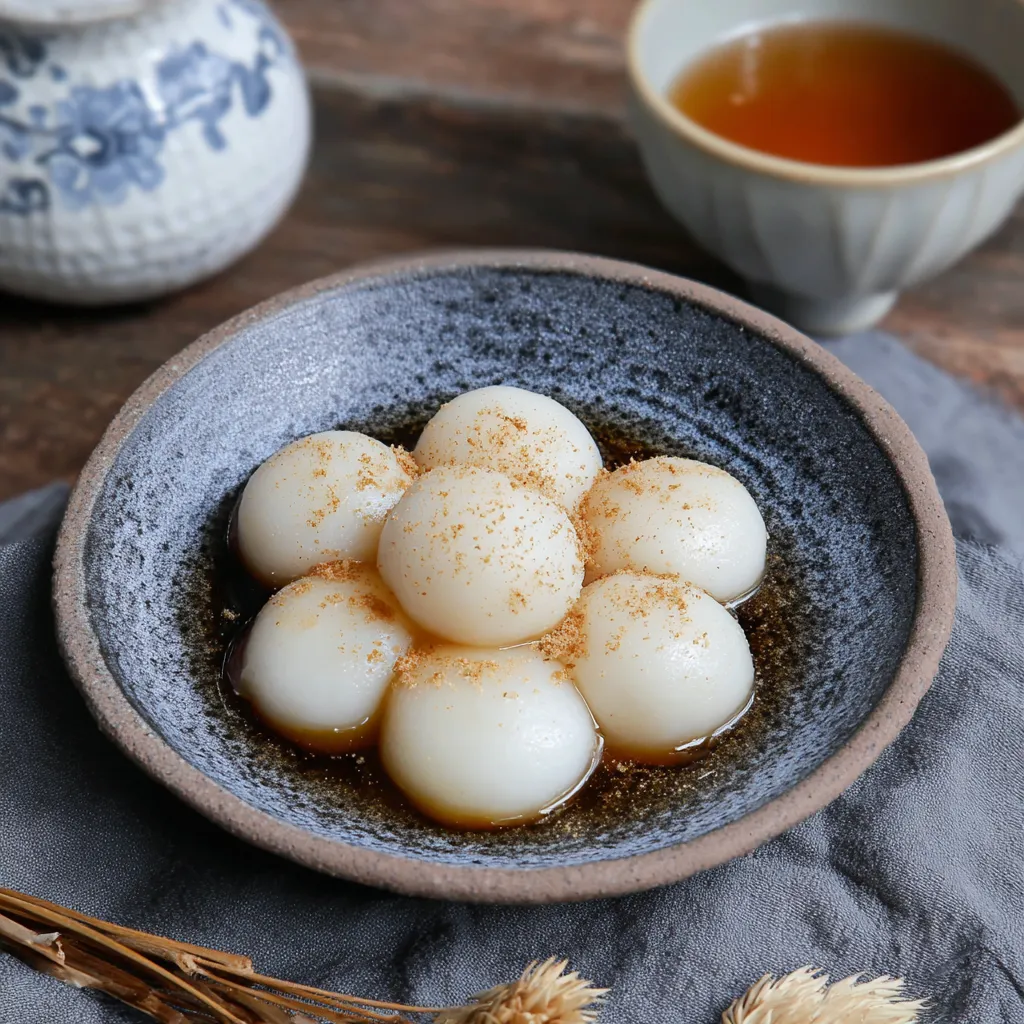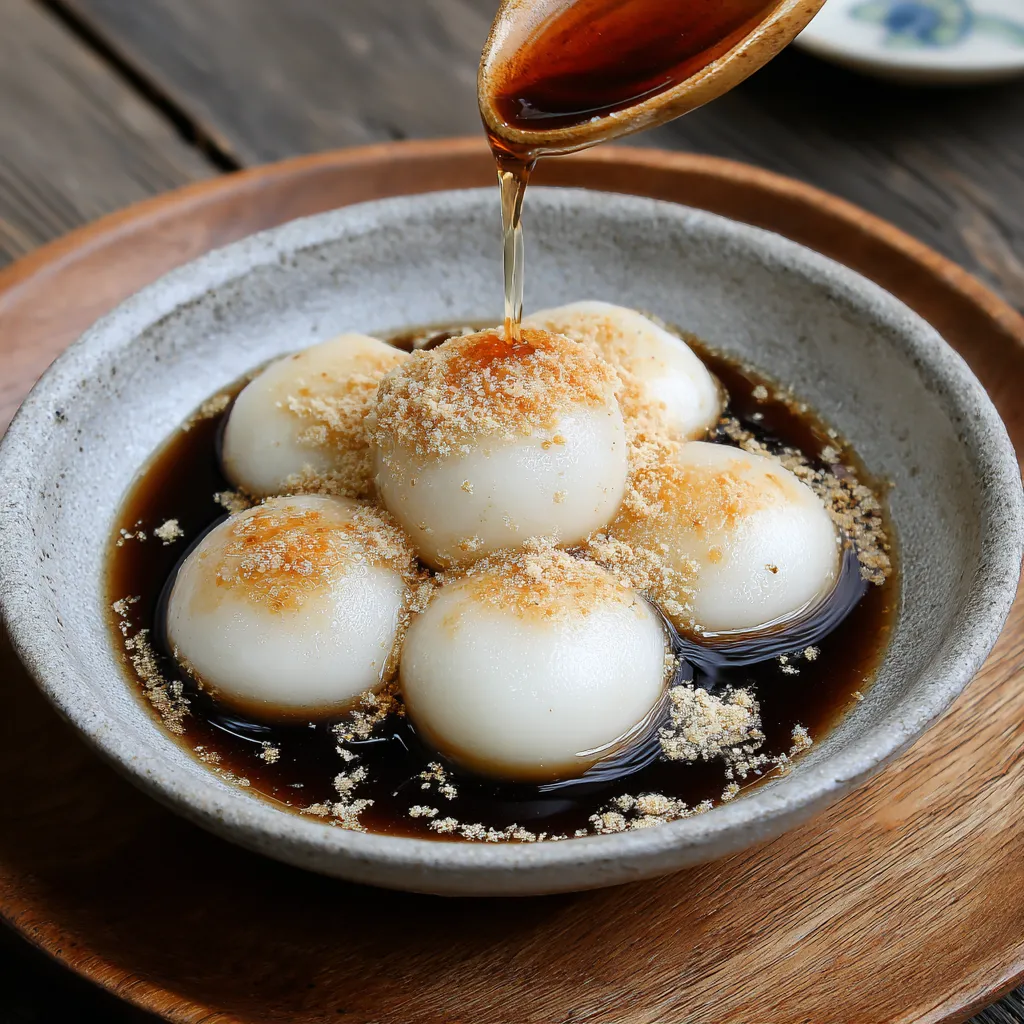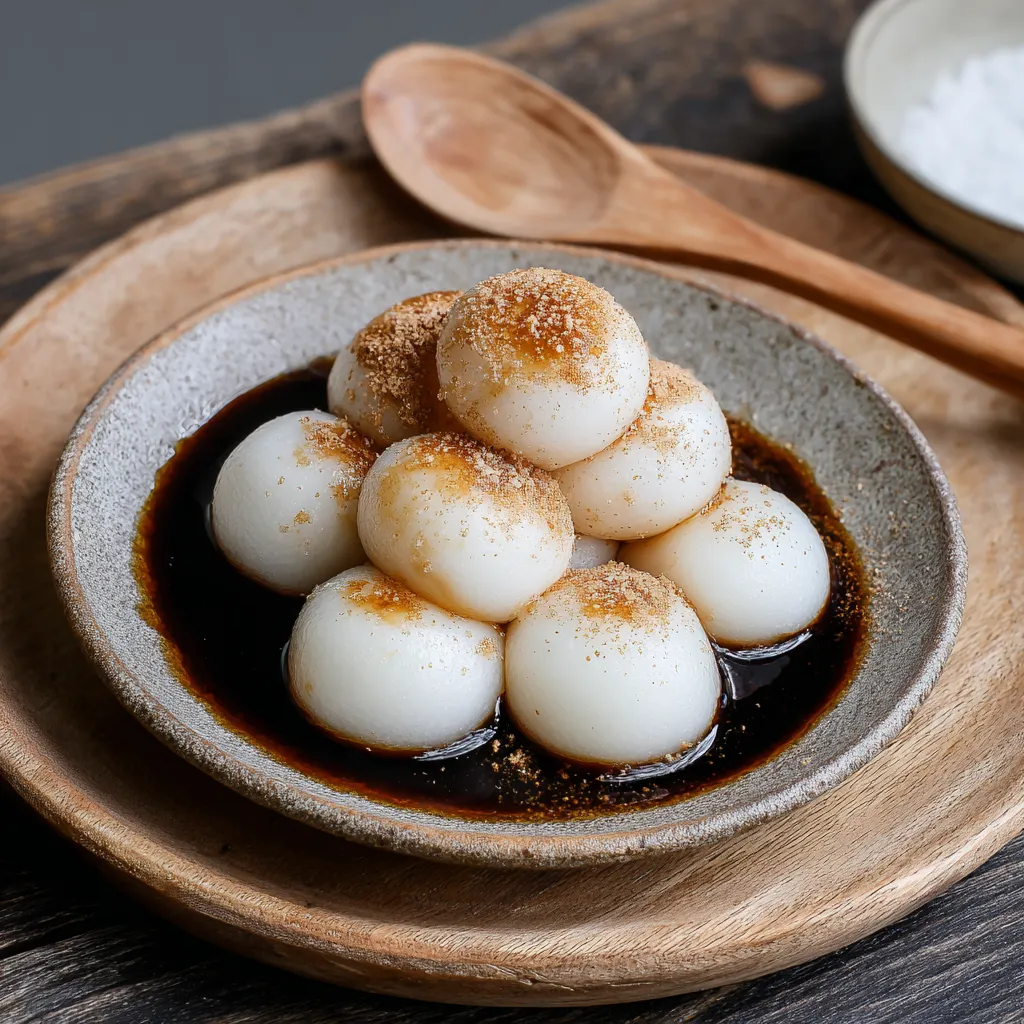 Pin
Pin
Soft chewy shiratama dango offer a delicious Japanese treat that comes together quickly with just a few ingredients and a little kneading These rice dumplings show up in popular desserts like anmitsu or are served simply with sweet syrup and kinako It is a dish I often reach for when I want something sweet yet light and deeply nostalgic for childhood summers spent rolling tiny balls with family
I grew up eager to be in the kitchen when this was made The satisfying process of shaping each ball brings a sense of calm and accomplishment plus every bite is wonderfully chewy and lightly sweet
Ingredients
- Glutinous rice flour: Known as shiratamako or mochiko, provides the chewy mochi base Look for shiny white flour with no off smells Japanese grocery stores usually have fresher imports
- Water: Binds the flour into a dough Use filtered water for best texture It is added gradually to reach the right consistency
- Potato starch: Called katakuriko or tapioca starch, helps with softness crucial if using mochiko option Choose starch with no lumps
- Dark brown sugar syrup: Also called kuromitsu, adds rich sweetness Traditional bottles work well but homemade is also easy
- Roasted soybean powder: Known as kinako, delivers an earthy nutty finish Opt for aromatic light brown kinako from a reputable brand
Step-by-Step Instructions
- Measure and Whisk Flours:
- If using shiratamako measure one hundred grams into a bowl and whisk briefly If using mochiko combine ninety grams mochiko with ten grams potato or tapioca starch and whisk until blended
- Add Water and Form Dough:
- Pour about half your measured water into the bowl Mix gently with a spatula to incorporate Keep adding water bit by bit thoroughly kneading each time You want a soft dough that feels like an earlobe not sticky and not dry Avoid dumping all water at once as you might not need every drop
- Shape the Dumplings:
- Once dough is smooth divide it into two equal pieces and roll each into a cylinder Shape the cylinders evenly then slice each into ten pieces Roll each piece between your palms to a perfectly round ball Press a light dent in the center with your finger to help even cooking
- Prepare for Cooking:
- Lay each dumpling on baking parchment to prevent them sticking together Meanwhile bring a large pot of water to a brisk boil
- Boil the Dumplings:
- Gently lower the balls into boiling water Use chopsticks to give a gentle nudge so they do not stick to the bottom Let cook for about three minutes until they rise to the top floating indicates they are done Time one additional minute at a gentle boil
- Chill in Ice Water:
- Turn off heat then immediately transfer dumplings with a mesh ladle to a bowl of ice water Let them cool completely for five to ten minutes This step locks in their chewy texture
- Drain and Serve:
- Drain well and serve at room temperature Top with plenty of dark brown syrup or generous sprinkles of kinako according to taste Enjoy their soft yet springy bite

My favorite thing to do is dust the dumplings with extra kinako while they are still just barely cool Nothing beats the aroma I fondly remember sharing this treat at family picnics letting the kids create their own syrup designs
Storage Tips
Shiratama dango firm up quickly after cooking so enjoy them the day they are made If you want to save some for later arrange the dumplings in a single layer on baking paper and freeze for an hour Once firm transfer them to a sealed freezer bag and store for up to one month Reheat gently in the microwave or soak a few minutes in room temperature water to regain their softness
Ingredient Substitutions
If you cannot find shiratamako mochiko flour works but needs a bit of starch for the best chewy yet tender bite Potato starch or tapioca starch both work equally well For toppings maple syrup is a decent substitute for kuromitsu if it is hard to source and toasted almond meal can be used instead of kinako though the taste profile changes
Serving Suggestions
Shiratama dango shine in classic Japanese parfaits alongside anko red bean paste and fresh fruit For a refreshing summer treat serve with chilled syrup and matcha ice cream You can also float them in sweet soups or enjoy with a scoop of vanilla ice cream for contrast
Cultural and Historical Context
Dango holds a special place in Japanese celebrations often appearing at festivals or as an offering at shrines The act of rolling and sharing these treats together builds connection and tradition Shiratama dango specifically is associated with happy family times and ancient lunar festivals

Shiratama dango is pure comfort and creativity in a few simple ingredients making it a dessert I come back to every time I crave a quiet sweet moment with a rich sense of home
Recipe Q&A
- → What is the difference between shiratamako and mochiko?
Shiratamako is a coarse glutinous rice flour that yields a slightly chewier, bouncier texture, while mochiko is finer and produces a softer, smoother dumpling. Both can be used, but water measurements may differ.
- → How do I know when the dango are finished cooking?
Once the dumplings float to the surface of the boiling water, continue cooking for one more minute. This ensures a tender, chewy texture before transferring them to an ice bath.
- → Can I use alternative toppings?
Yes, while traditional toppings include kuromitsu and kinako, you can experiment with sweetened red bean paste, fruit, or matcha powder for different flavors.
- → How should leftovers be stored?
Freeze dumplings spaced out on a tray, then store in a sealable bag. Reheat briefly in a microwave or soak in water until soft.
- → What texture should the dough have before shaping?
The dough should be smooth and elastic, similar to the feel of an earlobe. Adjust water gradually to avoid a sticky or dry result.
